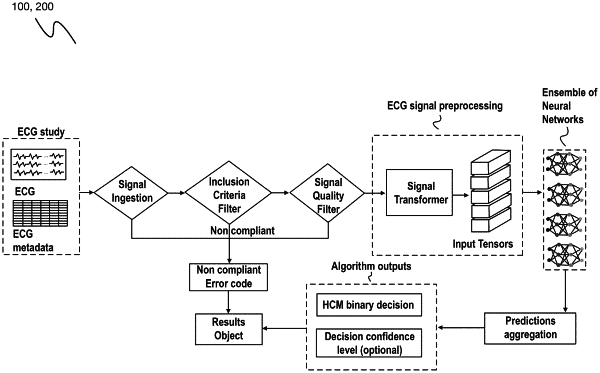| CPC A61B 5/7267 (2013.01) [A61B 5/366 (2021.01); G16H 50/70 (2018.01); A61B 5/7203 (2013.01)] | 20 Claims |

|
1. A method for cardiac signal processing, comprising:
receiving electrocardiogram (ECG) data associated with a patient;
determining that the ECG data is valid for use with a trained detection model, comprising providing the ECG data to a trained quality model, wherein the trained quality model is trained to detect low quality input data within the ECG data based on a set of quality indices, wherein the low quality input data is not valid for use with the trained detection model, wherein the trained detection model is associated with detection of a medical condition;
transforming the ECG data into a detection model input for the trained detection model;
at the trained detection model, determining a prediction metric based on the detection model input, wherein the prediction metric is indicative of a likelihood that the patient has the medical condition;
determining that the prediction metric is greater than a threshold value;
in response to determining that the prediction metric is greater than the threshold value, based on the prediction metric, determining an output indicative of the patient and the medical condition; and
providing the output to a user.
|